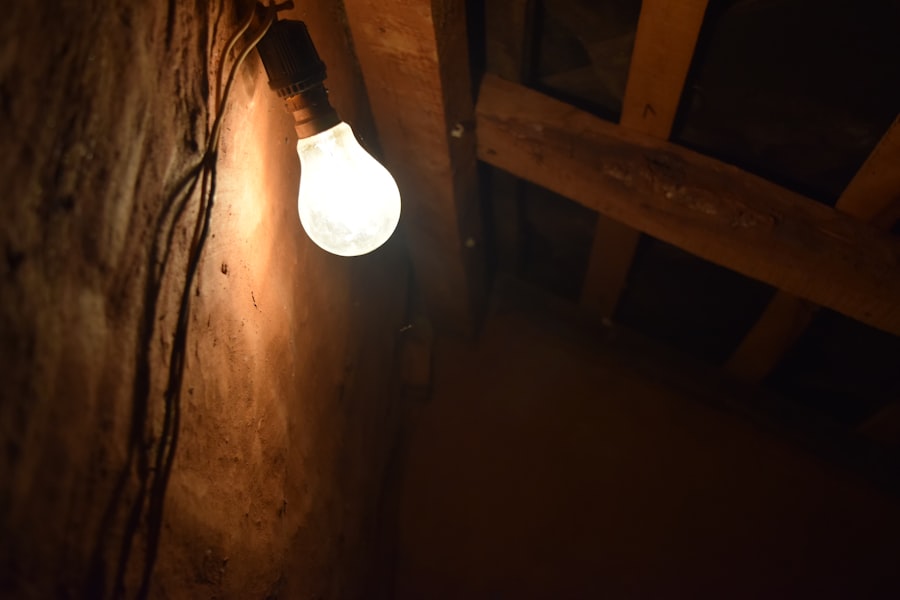Maintaining appropriate warmth for chickens is essential for their overall health and productivity. Chickens are susceptible to temperature fluctuations and may experience cold stress when exposed to low temperatures. This stress can result in reduced egg production, compromised immune function, and in severe cases, mortality.
As such, chicken keepers must recognize the importance of providing adequate warmth and implement effective heating strategies to ensure their flock’s comfort and well-being. Chickens thrive in temperatures between 65-75 degrees Fahrenheit (18-24 degrees Celsius). When temperatures fall below this range, chickens may experience discomfort and stress.
In extremely cold conditions, hens may cease egg production as their bodies prioritize survival over reproduction. Furthermore, cold temperatures can cause chickens to expend more energy to maintain body heat, leading to increased feed consumption and potential weight loss. To mitigate these adverse effects, chicken owners should focus on keeping their flock warm through various heating methods and insulation techniques.
Table of Contents
- 1 Utilizing Natural Insulation and Shelter
- 2 Providing Adequate Bedding and Nesting Materials
- 3 Using Heat-Generating Compost and Mulch
- 4 Harnessing Solar Energy for Heating Solutions
- 5 Implementing Passive Heating Techniques
- 6 Monitoring and Adjusting for Optimal Temperature Regulation
- 7 FAQs
- 7.1 What are some ways to keep chickens warm without electricity?
- 7.2 How can I insulate my chicken coop to keep it warm without electricity?
- 7.3 What is deep bedding and how can it keep chickens warm without electricity?
- 7.4 What kind of extra feed can I provide to keep my chickens warm without electricity?
- 7.5 Are there alternative energy sources I can use to power heat lamps for my chickens?
- 7.6 What are some solar-powered heaters that can be used to keep chickens warm without electricity?
Key Takeaways
- Keeping chickens warm is crucial for their health and well-being, especially during cold weather.
- Natural insulation and shelter, such as trees, shrubs, and coop design, can help regulate temperature and protect chickens from harsh weather conditions.
- Adequate bedding and nesting materials, like straw and wood shavings, provide warmth and comfort for chickens.
- Heat-generating compost and mulch can be used to create a natural heating source for chicken coops.
- Solar energy can be harnessed to provide heating solutions for chicken coops, reducing reliance on traditional energy sources.
Utilizing Natural Insulation and Shelter
Insulation: The Key to Retaining Heat
Proper insulation is crucial for maintaining a comfortable environment for chickens. When building a chicken coop, it’s essential to use materials that provide good insulation, such as thick wood or insulated panels. This helps to retain heat and protect chickens from cold drafts.
Sealing Gaps and Cracks: Preventing Heat Loss
In addition to insulation, sealing any gaps or cracks in the coop is vital for preventing cold air from entering and warm air from escaping. This ensures that the coop remains warm and cozy, even in the coldest months.
Adequate Shelter: Protection from the Elements
Providing adequate shelter is essential for keeping chickens warm. A well-designed coop should have proper ventilation to prevent moisture buildup while also offering protection from harsh winds and cold temperatures. Adding windbreaks or planting shrubs around the coop can further shield chickens from cold drafts.
Raising the Coop: Preventing Moisture and Cold
Finally, ensuring that the coop is raised off the ground can prevent moisture and cold from seeping in from below. By utilizing natural insulation and providing adequate shelter, chicken owners can create a cozy and warm environment for their flock, even during the coldest months of the year.
Providing Adequate Bedding and Nesting Materials
Another important aspect of keeping chickens warm is providing them with adequate bedding and nesting materials. Bedding serves as an insulating layer that helps retain heat and provides a comfortable surface for chickens to rest on. Materials such as straw, hay, or wood shavings are commonly used as bedding and can effectively trap heat to keep chickens warm.
It is important to regularly clean and replace bedding to maintain its insulating properties and prevent moisture buildup, which can lead to cold and damp conditions. In addition to bedding, nesting materials are essential for keeping chickens warm, especially during the egg-laying process. Providing nesting boxes filled with soft materials such as straw or shredded paper can help keep eggs warm and prevent them from getting too cold, which can affect their viability.
Ensuring that nesting boxes are located in a draft-free area of the coop can further protect eggs from cold temperatures. By providing adequate bedding and nesting materials, chicken owners can create a cozy and warm environment that promotes the well-being of their flock.
Using Heat-Generating Compost and Mulch
Heat-generating compost and mulch can be utilized as a natural heating solution for keeping chickens warm during colder months. Composting organic materials such as manure, straw, and food scraps generates heat as the materials decompose. This heat can be harnessed to warm the coop by placing compost piles strategically around the chicken’s living area.
The heat generated from composting can help maintain a consistent temperature within the coop, providing a natural and sustainable heating solution for chickens. In addition to compost, using mulch in outdoor areas where chickens roam can also help retain heat in the ground. Mulch acts as an insulating layer that traps heat and prevents the ground from becoming too cold.
This can be particularly beneficial in areas where chickens spend a significant amount of time outdoors, as it provides them with a warmer environment to forage and explore. By utilizing heat-generating compost and mulch, chicken owners can take advantage of natural processes to keep their flock warm while also promoting sustainability and environmental consciousness.
Harnessing Solar Energy for Heating Solutions
Harnessing solar energy can be an effective way to provide heating solutions for keeping chickens warm. Solar panels can be installed on the roof of the chicken coop to capture sunlight and convert it into energy that can be used to power heating elements such as radiant floor heating or heat lamps. This renewable energy source provides a sustainable and cost-effective way to keep chickens warm without relying on traditional electricity or fossil fuels.
In addition to solar panels, passive solar heating techniques can also be implemented to naturally warm the coop. Designing the coop with large south-facing windows can allow sunlight to enter and heat the interior space during the day. Thermal mass materials such as concrete or stone can absorb and store heat from the sun, releasing it gradually to maintain a consistent temperature within the coop.
By harnessing solar energy for heating solutions, chicken owners can reduce their environmental impact while providing their flock with a warm and comfortable living environment.
Implementing Passive Heating Techniques

Maximizing Solar Gain
Designing the coop with proper orientation and insulation is a key passive heating technique. Placing the coop in a south-facing direction and incorporating thick insulation can help retain heat from the sun and prevent heat loss, ultimately creating a warmer environment for chickens.
Utilizing Body Heat
Another passive heating technique is utilizing the heat generated by chickens themselves. Chickens produce body heat, especially when they huddle together at night. By providing ample space for chickens to roost close together and insulating the coop to retain this heat, chicken owners can take advantage of the natural warmth generated by their flock.
Regulating Temperature and Humidity
Additionally, utilizing passive ventilation systems such as ridge vents or adjustable openings can help regulate temperature and humidity levels within the coop without relying on mechanical ventilation.
Monitoring and Adjusting for Optimal Temperature Regulation
Monitoring and adjusting temperature regulation is essential for ensuring that chickens are kept warm without overheating. Using a thermometer inside the coop can help chicken owners monitor temperature levels and make necessary adjustments to heating solutions. It is important to regularly check for any drafts or cold spots within the coop and address them promptly to maintain a consistent and comfortable environment for chickens.
In addition to monitoring temperature levels, observing chicken behavior can also provide valuable insights into their comfort levels. If chickens are huddling together or showing signs of distress, it may indicate that they are too cold and require additional heating solutions. On the other hand, if chickens are panting or seeking cooler areas, it may indicate that they are too hot and need ventilation or cooling options.
In conclusion, keeping chickens warm is essential for their health and well-being, especially during colder months. By understanding the importance of warmth for chickens and implementing effective heating solutions, chicken owners can ensure that their flock remains comfortable and thriving throughout the year. Utilizing natural insulation, providing adequate bedding and nesting materials, harnessing solar energy, implementing passive heating techniques, and monitoring temperature regulation are all crucial aspects of keeping chickens warm.
By prioritizing their flock’s warmth, chicken owners can promote a happy and healthy environment for their feathered friends.
If you’re looking for ways to keep your chickens warm without electricity, you might want to check out this article on heater options for a chicken coop. It offers some great tips and ideas for keeping your feathered friends cozy during the colder months.
FAQs
What are some ways to keep chickens warm without electricity?
Some ways to keep chickens warm without electricity include insulating the coop, using deep bedding, providing extra feed, using heat lamps powered by alternative energy sources, and using solar-powered heaters.
How can I insulate my chicken coop to keep it warm without electricity?
You can insulate your chicken coop by adding extra layers of insulation to the walls, ceiling, and floor. You can also use materials such as straw, hay, or foam board to help retain heat inside the coop.
What is deep bedding and how can it keep chickens warm without electricity?
Deep bedding involves adding a thick layer of organic material such as straw, hay, or wood shavings to the floor of the coop. As the bedding decomposes, it generates heat which can help keep the coop warm without electricity.
What kind of extra feed can I provide to keep my chickens warm without electricity?
You can provide your chickens with extra feed such as cracked corn or high-energy grains to help them generate body heat and stay warm during cold weather.
Are there alternative energy sources I can use to power heat lamps for my chickens?
Yes, you can use alternative energy sources such as solar power or wind power to generate electricity for heat lamps in the chicken coop. This can help keep the chickens warm without relying on traditional electricity.
What are some solar-powered heaters that can be used to keep chickens warm without electricity?
Some solar-powered heaters that can be used to keep chickens warm without electricity include solar panels connected to electric heaters, solar-powered radiant floor heating systems, and solar-powered water heaters for providing warm water to the chickens.
Meet Walter, the feathered-friend fanatic of Florida! Nestled in the sunshine state, Walter struts through life with his feathered companions, clucking his way to happiness. With a coop that’s fancier than a five-star hotel, he’s the Don Juan of the chicken world. When he’s not teaching his hens to do the cha-cha, you’ll find him in a heated debate with his prized rooster, Sir Clucks-a-Lot. Walter’s poultry passion is no yolk; he’s the sunny-side-up guy you never knew you needed in your flock of friends!







